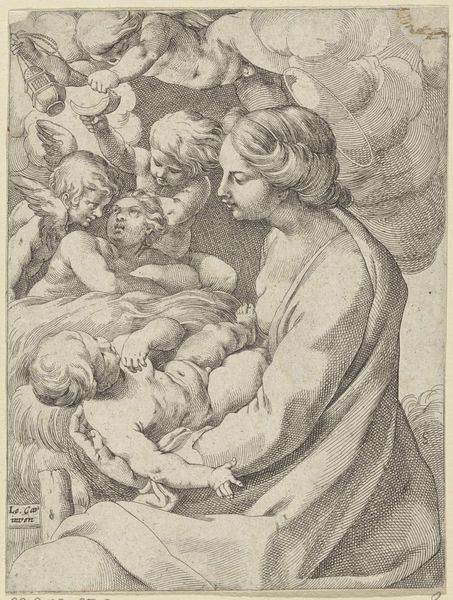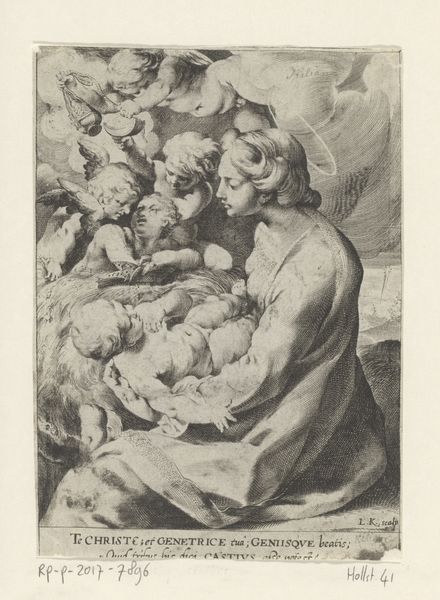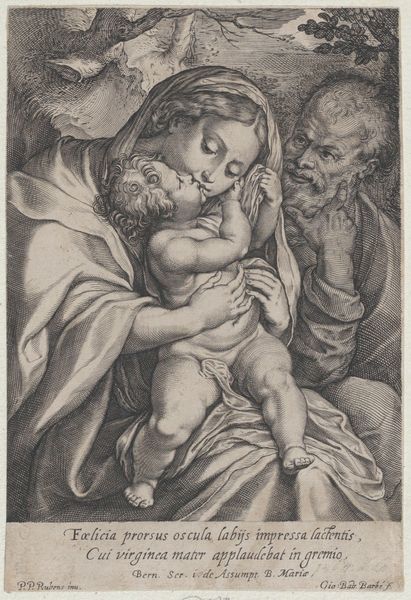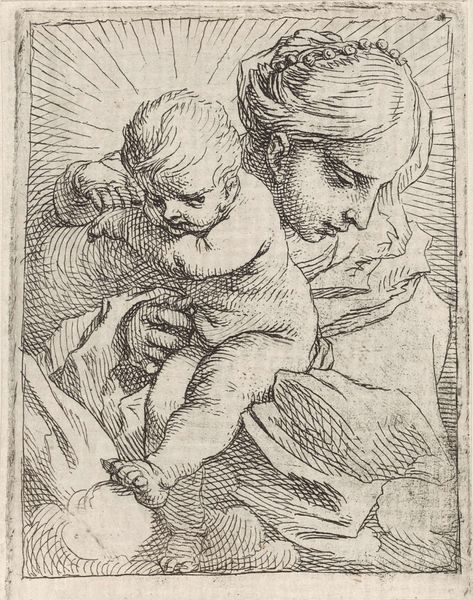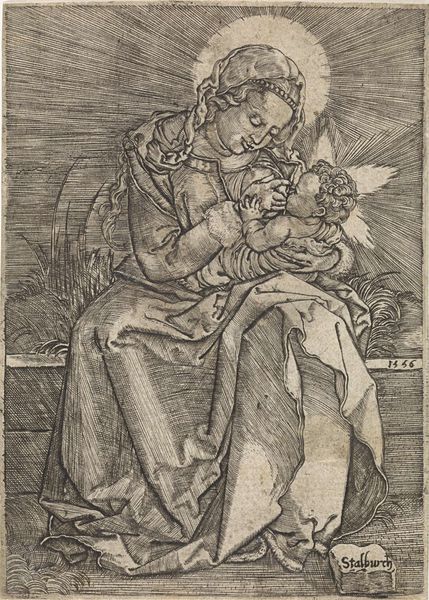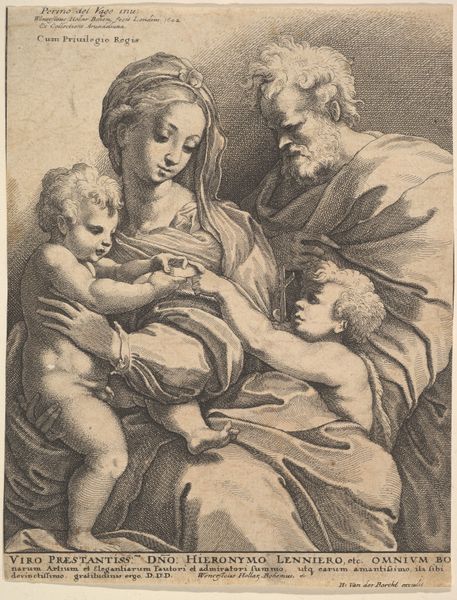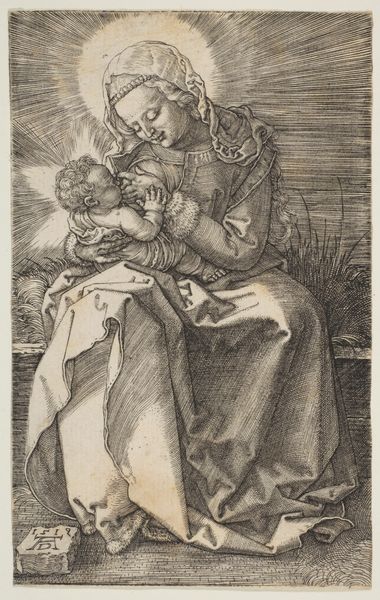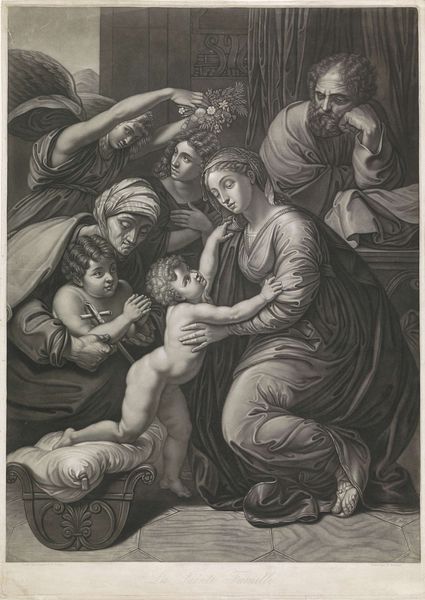
drawing, paper, ink
#
portrait
#
pencil drawn
#
drawing
#
mannerism
#
figuration
#
paper
#
ink
#
pencil drawing
#
portrait drawing
#
italian-renaissance
Dimensions: height 162 mm, width 115 mm
Copyright: Rijks Museum: Open Domain
Curator: Here we have "Maria met Kind en engelen," or "Mary with Child and Angels," a drawing made with ink on paper around 1595-1610, attributed to Ludovico Carracci. Editor: Immediately, I feel a kind of gentle dreaminess about this image. The soft lines and shading almost give it the feeling of a half-remembered vision. There’s a vulnerability there. Curator: Carracci was an important figure in the late 16th-century art world. He and his cousins helped pioneer the Bolognese School of painting, which was really trying to reform art, reacting against the artificiality they saw in Mannerism and seeking a return to naturalism. Editor: Mannerism always struck me as the art equivalent of putting on airs. This piece, it’s got such a quiet, genuine quality in the relationship between Mary and the Christ Child. And then, these cheeky little cherubs peeking in… it's like a celestial family affair. Curator: That’s an interesting point. The angels are characteristic of the religious subjects so common in Italian Renaissance art. But Carracci has presented a maternal Mary in a way that domesticates, if you will, what could be a very formal religious scene. Editor: It does make you wonder, doesn't it, about the function of art at the time? Like, who was meant to look at this and what were they meant to feel? Curator: The late Renaissance period was one of major cultural and political shift. Images became powerful tools for religious and political expression. Carracci was influenced by the ideals promoted by the Council of Trent which advocated art should serve the didactic role, be morally uplifting and promote piety. Editor: It certainly sparks a tenderness… makes you think about art as a universal bridge, connecting us to these ancient sentiments. Funny, isn’t it, how a few lines on paper can still pull us into a moment centuries later? Curator: Indeed, and by situating art and images into the context of religious doctrine, we can appreciate its complex intersection of the artistic, political, and cultural forces that it shaped. Editor: I think that in every masterpiece there’s a silent story – sometimes somber, often filled with the lightness of being – that has less to do with grand historical narratives, and more to do with our capacity for empathy.
Comments
No comments
Be the first to comment and join the conversation on the ultimate creative platform.

